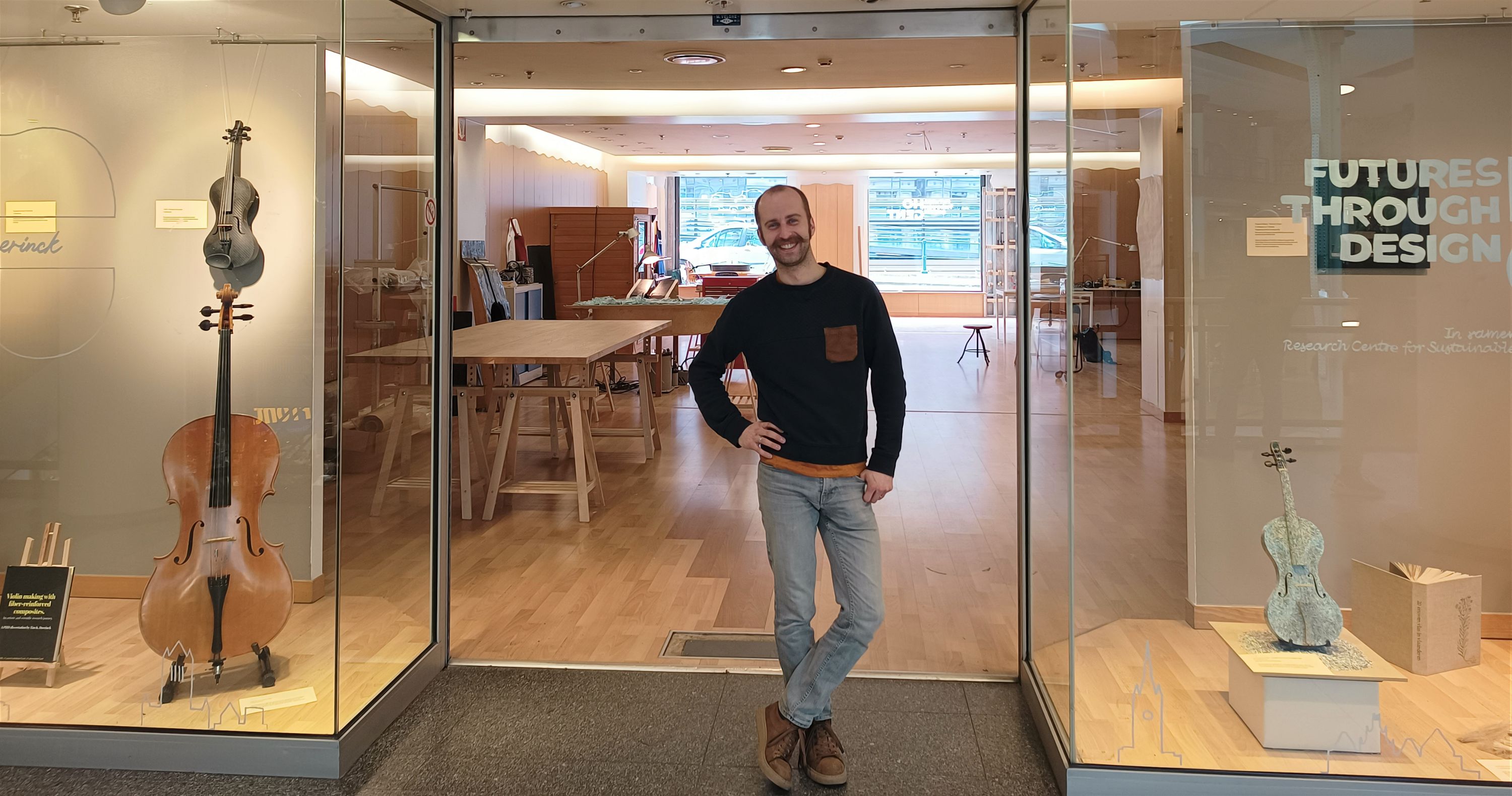Ghent South Shopping Center is getting a new and remarkable shop: innovative string instruments made from flax composite will be made and researched in a pop-up studio by the HOGENT research group Futures Through Design.
Researcher dr. Tim Duerinck won a Henry van de Velde award, the most important design prizes in Belgium award in 2021 for his first string instruments made from flax. After passing through the Texture Museum in Kortrijk last year, he is now continuing his research in a new pop-up studio in Ghent South Shopping Center. He and other HOGENT colleagues will spend two years there, making instruments and researching the string instruments made of flax. Researchers from Ghent University are also collaborating on the project. The research should eventually lead to the establishment of a spin-off company.
A worthy alternative
Tim Duerinck: “The first instruments we made from flax are very promising, they have a warm powerful sound and have some advantages over wooden string instruments. They are less susceptible to humidity and temperature and are therefore less vulnerable than wooden instruments. So far, carbon is the only other material that string instruments are made of, but that is not a good option in terms of ecological footprint," Tim Duerinck outlines.
It is certainly not the intention to replace wooden string instruments, he stresses. "But for musicians who regularly play outdoors, flax is a worthy alternative." An additional strength is that flax is a local product: Belgium has a long tradition of flax industry. Although the processing into textile products has largely moved to low-wage countries, Belgium remains a key player in the field of flax cultivation to this day, with around 1900 farms operating in it. Together with France and the Netherlands, our country accounts for 85 to 90 per cent of global flax fibre production.
Marketing
Although Tim Duerinck's previous research could already show that flax is an interesting building material for string instruments, more research is required. "There is a prototype, but the production of such an instrument is very labour-intensive and specialised. During the next two years, we will investigate how to make instruments from flax in a faster and better way so that we can bring them to market at a competitive cost," he explains. To achieve that goal, the school of arts researcher thus moved into a place in the Ghent South Shopping Centre for two years.
After all, Tim needs more than 100 square metres but there were no more ateliers of that size available at the school of arts. "We are kind of a victim of our own success," he says. "The spaces I used to have at my disposal are now occupied by other projects in the context of instrument making. So, I started looking for other locations and via the city administration we ended up at Ghent South Shopping Center."
There was an immediate interest in providing a temporary place for the research. Creative fill-ins fit into the shopping centre's policy of building a new image. For the school of arts, it is a way to break out of the traditional research and teaching context and go public with the research.
Trial sessions
The atelier usually remains closed to the public, but shoppers passing by will see Tim at work and instruments will be displayed. Occasionally, the studio will be open: "We plan a limited number of studio days and want to organise open trial sessions and concerts. After all, we’re a music atelier so music should regularly sound."
Those who play the violin, viola or cello themselves and would like to try out an instrument can always contact Tim Duerinck (tim.duerinck@hogent.be). When the research is completed in two years, Tim wants to offer its flax instruments for sale through a spin-off company.
The tradition is to associate the brand name of musical instruments with the designer. Think Stradivarius, Pianos Steinway, Fender: these are all the family names of the builders. So, in a few years, we will be able to listen to Bach's delightful Cello Suite N° 1 in G Major, played on a Duerinck.
